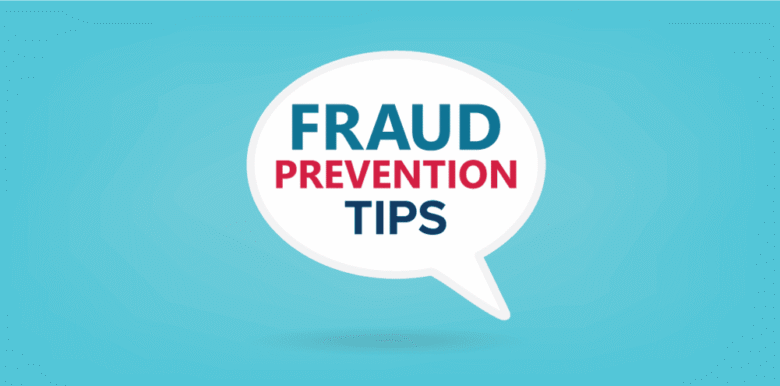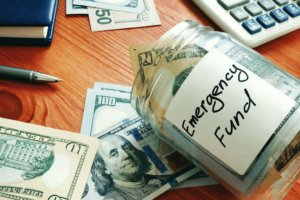In an increasingly digital world, saving is no longer just about interest rates and investment options; it’s about proactively protecting yourself against fraud—an invisible adversary. Today, fraudsters use psychology and technology to circumvent our defenses. This threat is growing and intensifying, impacting families of all sizes, who suffer billions of dollars in financial losses annually. Savings protection is essential for financial well-being. This article goes beyond basic tips to provide detailed and effective financial protection. We examine the latest fraudster tactics and offer proven, proactive strategies to protect your financial future and navigate the digital world with confidence.
The Psychology of Fraud: Targeting You
Understanding human psychology is crucial for fraud prevention. Fraudsters skillfully exploit cognitive biases and emotional responses to distort your judgment. They compel you to take immediate action or risk having your bank account frozen or facing legal action. They also pose as government officials, bank executives, and technical support personnel to gain credibility. Emotional stories from family members desperate for money are another effective tactic. Understanding that these attacks are designed to scare, panic, or even drive you crazy can help you quickly and privately research any information that requires you to handle money or personal information.
Digital Defense: More Than a Strong Password
A strong and unique password is the first step, but a castle needs walls, moats, and guards. Modern digital security relies on multi-factor authentication. This feature requires a second verification method, such as an app code or biometric scan, making it difficult for hackers to gain access, even if they steal your password. Furthermore, be vigilant in all digital communication. Never click on links or open attachments in unsolicited emails or text messages. Instead, enter the address of an official website or app. Regularly update the software on all your devices, as these often contain important security updates for newly discovered vulnerabilities that hackers want to exploit.
The Rise of Social Engineering and Phishing 2.0:
Phishing emails with spelling errors are becoming increasingly difficult to detect. “Phishing 2.0” has arrived, with its modified and highly seductive tactics. Spear phishing involves criminals using your social media profile to send emails that appear to come from your work, colleagues, or family. Vishing and smishing are even more dangerous and use fraudulent phone calls or text messages from banks or trusted companies to warn you of suspicious activity. They then try to trick you into revealing your one-time password or installing remote access software. Knowing that reputable companies will never ask for your password, PIN, or full social security number by phone, email, or text message is your best protection.
Proactive Monitoring: Account Security
A negative attitude toward your finances attracts scammers. You must proactively protect your finances. This includes setting up real-time notifications for all transactions on your bank and credit card accounts, regardless of the amount. Scammers will test your account for a small fee before withdrawing large amounts. Make it a habit to carefully check your bank and credit card accounts monthly, not just your balance. Check your free credit report annually at AnnualCreditReport.com for unknown accounts or requests. This awareness allows you to detect and report fraud early, minimizing losses.
Safeguarding Your Personal Information in a Public World:
Your personal information is a breeding ground for fraud. Your mother’s maiden name, your pet’s name, and your date of birth could potentially unlock your accounts. This information should be handled with care. Avoid easily accessible data questions, such as “first car model” and “childhood street address,” found on social media. Shred account numbers and personal information from paper documents before handling physical documents. Never provide personal information without confirming its necessity and security. One of the most powerful measures you can take is freezing your credit with Equifax, Experian, and TransUnion. This stops anyone, including yourself, from acquiring new credit under your name until you lift the freeze.
Family Action Plan for Suspected Fraud:
Fraud prevention requires collaboration from the family. Discuss the signs of fraud with older parents and tech-savvy children. No one should make important financial decisions or send money based on unsolicited phone calls or emails without first verifying the information through reliable channels. If a grandmother receives a frantic call from a “grandchild” in need, she should hang up and call the parents to confirm. Give family members a trusted contact they can reach if they feel uncertain or stressed. A pre-established plan can defuse the situation and provide a reasonable way to verify, deterring many emotional scammers.
Conclusion:
The fight against fraud continues, but there’s no need to fear. You can take control of your finances by shifting your perspective from victim to defender. These strategies don’t breed paranoia; they build complex, self-managing defenses. Staying informed, understanding emerging risks, and communicating with your family are your most effective weapons. Don’t forget to protect your bank accounts and the dreams, stability, and future they represent. By taking these precautions, you can strengthen your financial health and make your savings work for you.
FAQs:
1. What should I do first if I’ve been scammed?
Take immediate action. Please inform your bank or credit card company about the fraud and freeze your account. Please report it to the Federal Trade Commission (FTC) and your local police department at ReportFraud.ftc.gov. If someone has compromised your identity, you can freeze your credit and file a fraud alert with the three major credit bureaus.
2. Are Venmo and Zelle safe?
These handy apps are intended for trusted transactions. Fraud protection for authorized payments is often weak. Never use them to pay strangers, and enable all security measures in the app, such as PIN and biometric authentication.
3. How do I check a website’s security before entering my payment information?
The website should begin with “https://,” not “http://.” The “s” stands for secure. A lock icon should also appear in the address bar. Warning: Some fraudulent websites now use HTTPS, so this feature is only one verification step and does not guarantee the website’s authenticity.
4. My “bank” sent a transaction verification link. What should I do?
Do not click the link. This is a typical SMS phishing attack. No legitimate bank would send unsolicited SMS messages with verification links. Instead, connect to your bank account through the app or website and check for notifications.
5. Is public Wi-Fi safe for banking or shopping?
It is strongly advised not to use public Wi-Fi. Unsecured public Wi-Fi networks allow hackers to steal data. If you need to conduct financial transactions outside your home, encrypt your internet traffic using a mobile hotspot or a trusted VPN.




